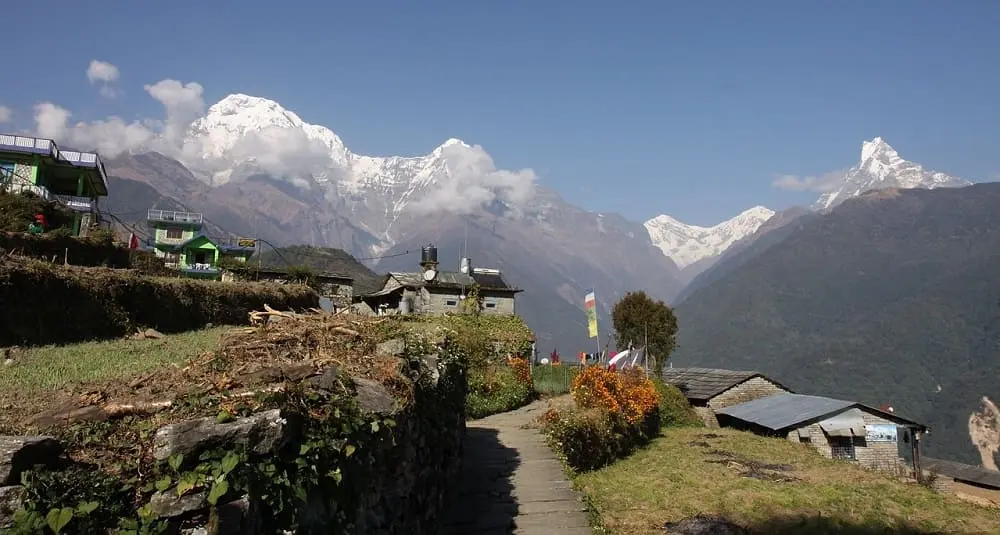Where is Annapurna?
Last Updated:
Annapurna is an iconic Himalayan mountain range in the Gandaki province of north-central Nepal. The massif stretches for some 55 kilometers and includes several major peaks, including Annapurna I, which rises to 8,091 meters, making it the tenth highest peak in the world.
The Annapurna massif is bounded to the north and east by the Thorung Pass, a high pass rising to 5,416 metres, and is surrounded by deep valleys and impressive gorges, notably the Kali Gandaki Gorge to the west. This region is characterized by a remarkable geographical diversity, ranging from subtropical forests to high mountain areas, offering a variety of spectacular landscapes.
The Annapurna region is also renowned for its treks, notably the famous Annapurna Circuit, which attracts trekkers from all over the world. This trek offers panoramic views of the snow-capped peaks, passes through traditional villages and allows you to discover the rich local culture. The town of Pokhara, some 40 km south of the massif, is often the starting point for expeditions and treks in the region.
The Annapurna massif is protected by the Annapurna Conservation Area, the largest conservation area in Nepal, covering an area of 7,629 square kilometers. The zone aims to preserve the region’s unique biodiversity, while promoting sustainable tourism and supporting local communities.
Annapurna I is particularly noteworthy in the history of mountaineering, as it was the first peak over 8,000 metres to be climbed. This historic ascent was made on June 3, 1950 by French mountaineers Maurice Herzog and Louis Lachenal. However, Annapurna is also notoriously dangerous, with a high death rate among climbers due to unpredictable weather conditions and the risk of avalanches.
The name Annapurna comes from Sanskrit and means goddess of the harvest or goddess of abundance, reflecting the cultural and spiritual importance of the mountain to the local population. The local people, particularly the Gurungs and Thakalis, consider the massif to be sacred and integrate its majestic presence into their traditions and way of life.
In addition to Annapurna I, the massif includes several other remarkable peaks, such as Annapurna II (7,937 meters), Annapurna III (7,555 meters), Annapurna IV (7,525 meters) and Gangapurna (7,455 meters). Each of these peaks presents unique challenges for climbers and contributes to the massif’s reputation in the climbing world.
The Annapurna region is also ecologically rich, home to a diverse range of flora and fauna. Rhododendron forests, bamboo groves and alpine meadows provide habitat for numerous species, some of which are endemic to the Himalayas. Conservation efforts aim to protect this fragile ecosystem while allowing visitors to experience the region’s natural beauty.
Annapurna is a mountain range in north-central Nepal’s Himalayas. With its majestic peaks, rich biodiversity and deep cultural significance, it is a must-see destination for mountaineers, hikers and nature lovers from all over the world.
You may also be interested in
geography

Where is Annapurna?
Answer
Annapurna is a Himalayan massif in north-central Nepal, comprising several peaks, including Annapurna I at 8,091 meters.